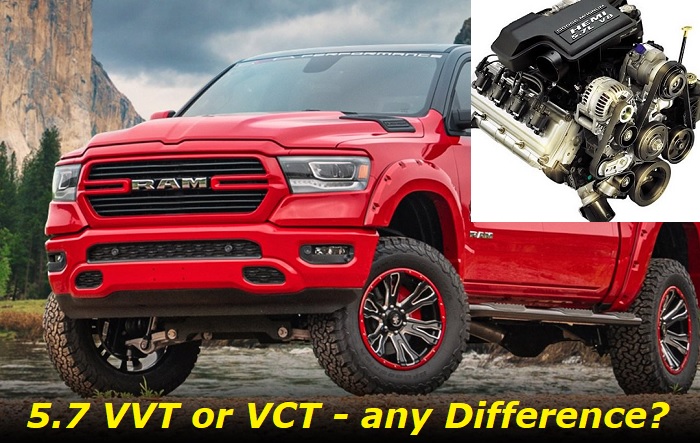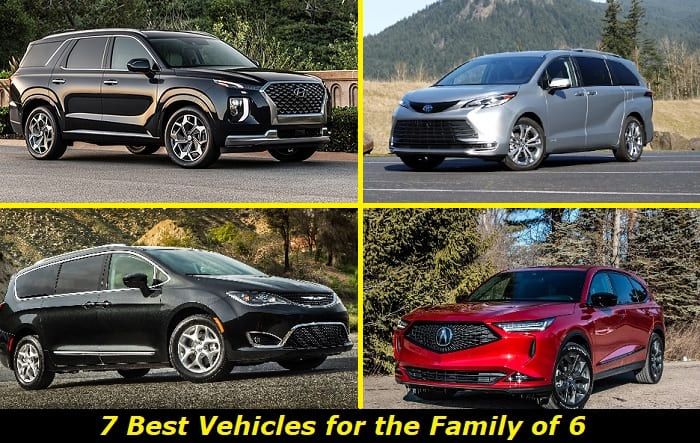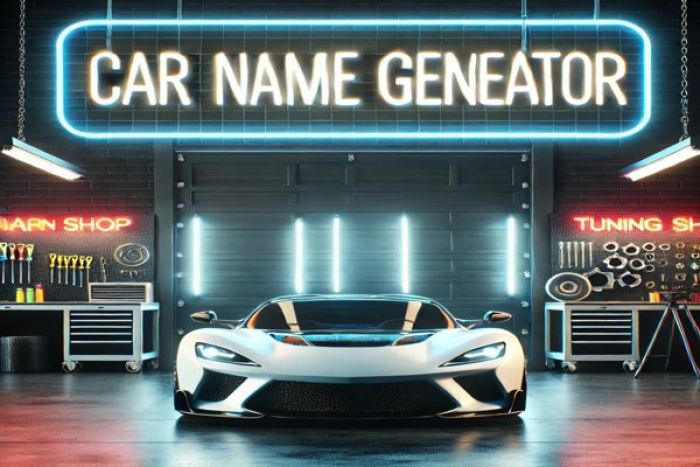The difference between VCT and VVT is such a confusing topic for most people, especially casual drivers or automotive fans. We admit that there is a thin red line distinguishing the two that's why some tend to interchange them.
The 5.7 Hemi engine particularly underwent a transition from VVT to VCT in its production phase. This oftentimes leaves people scratching their heads when discussing this specific type of engine with them. So, to get this out of the way, let's explore the elements that make each version distinct from one another.

How the 5.7 Hemi Began
The Hemi engine was developed by Chrysler in the post-World War II period. The first of which, the FirePower, came out in 1951. It was followed by a second generation of the engine from 1964 to 1971. The third-generation series began in 2003 with the 5.7 Hemi where the subject of our discussion will mainly revolve.
The 5.7 Hemi was crafted for heavy-duty applications with a focus on performance, fuel economy, and reduced fuel emissions. Despite its "Hemi" moniker, this third-generation engine completely departs from its predecessors' signature design. Instead, its heads have become flatter and more complicated while the V8 chambers are no longer, in a strict sense, hemispherical in layout. From its introduction in 2003, it only underwent one major revision in 2009. To this date, it is still used in popular vehicles.
The engine was initially used by heavy-duty Ram trucks as a replacement for the Magnum 5.9 engine. Now, it has expanded into a variety of applications because of its reliability.
VCT Vs VVT
Before going further, it would help to know the basics first. So, let's talk about VCT and VVT in this section to help you further understand the rest of this article.
- VVT
The VVT is an evolution of the multi-valve technology for engines. It stands for "variable valve timing". The main goal of this type of engine design is to optimize engine output while maintaining fuel economy. As its name says, it enhances the valve timing of the engine to deliver peak power efficiency, and at the same time, it retards the valve timing during certain conditions to conserve fuel.
- VCT
On the other hand, VCT stands for "variable camshaft timing". In a nutshell, this system is technically a kind of variable valve timing. What makes it different from its predecessor though is that it uses an oil control valve to manage the operation of oil in a dedicated part of the camshaft sprocket consisting of a phasing device. Like the original VVT build, it decides whether to advance or retard the camshaft timing under certain situations. The upgraded design makes it more effective in the optimization of the engine's functions to deliver the right amount of power when needed and more efficient in regulating fuel consumption during low-performance runs.
Key Features of the 5.7 Hemi VVT and VCT
The original version of the 5.7 Hemi is a naturally-aspirated V8 engine with a 98-degree pushrod arrangement and VVT. It weighs approximately 500 lbs. and runs on regular unleaded gasoline but its recommended fuel type is premium fuel. Fuel injection is managed by a multi-port sequential system.
The engine features a displacement of 5,654 cc with a 3.917-inch bore and 3.578-inch stroke. The unit is housed in a cast-iron block and it comes with a cast aluminum alloy for its head composed of 16v OHV design. The compression ratio of the engine from the 2003 to 2008 VVT model years was 9.6:1.
The 5.7 Hemi VCT follows the format of the former but with a few tweaks, especially on the cylinder head in order to improve airflow. It revises the compression ratio of the engine to 10.5:1 between 2009 and the present model years to augment thermal efficiency leading to an increase in mechanical energy that further translates to more horsepower and torque values.
- Power
The maximum speed of the engine tops at 5,800 rpm. The 5.7 Hemi VVT used in the 2003-2008 Ram heavy-duty pickup range delivers up to 345 hp at 5,600 rpm and 375 lb-ft of torque at 4,400 rpm. The succeeding VCT variant cranks the numbers up between 383 and 395 hp at 5,600 rpm while the torque also goes up between 400 to 410 lb-ft at 3,950 to 4,000 rpm, depending on the Ram model that uses it. Furthermore, it offers a towing capacity of up to 12,750 lbs.
Usually, the engines are locked with a limiter to keep the top speed of the vehicle using them at 118 mph. that is also to protect the integrity of the power units to ensure their longevity. In a Ram 1500, it allows a 0-60 mph sprint in just 5.2 seconds, which is quite impressive for such a massive pickup.
- Fuel Economy
In terms of fuel efficiency, the EPA rated the latest version of the VCT engine at 15 mpg in city drives and 22 mpg on highway trips when fitted in the Ram 1500. The fuel economy rating is estimated to be four percent better than the VVT version. Moreover, if partnered with the eTorque, the values are improved to 17 mpg and 23 mpg in the city and highway, respectively.
- Applications
Although the primary application of both the 2003-2008 5.7 Hemi VVT and the 2009-present 5.7 Hemi VCT are for the Dodge Ram 1500, 2500, and 3500 models, special configurations of the engine are used for vehicles from other brands, too. The likes of the Dodge Durango (non-HEV variant) and Chrysler Aspens (non-HEV variant) operate on a 5.7 Hemi VCT with an active intake manifold. On the contrary, Jeep vehicles and some passenger car models take the passive intake manifold design of the engine.
Crate versions of the engines are also very popular in engine swaps and tuning. So far, the best tuning recipes for the engines pair them with superchargers. Complemented by ECU tuning and mods in the cam, exhausts, and other performance-centered upgrades, this formula can drive the total output of the engine to over 700 hp.
As an added note, both versions of the 5.7 Hemi are even used to power boats and snowmobiles.
- Reliability
The 5.7 Hemi, whether it's a VVT or VCT, can last up to 250,000 to 300,000 miles. That means years of trouble-free use if you avoid frequently pushing your engine to work harder than usual and you subject it to regular preventive maintenance.
- Major Awards
The VVT's wide array of advantages earned it a spot in Ward's 10 Best Engine List for five consecutive years between 2003 to 2007. The VCT received the same recognition in 2009 as well. This truly speaks of its quality as it is not just the consumers praising it, but also reputable institutions within the automotive industry.
- Main Issues
Even with their multi-year accolades, the 5.7 Hemi is not without its share of controversies over the years. In 2014, Chrysler issued a recall for its vehicles bearing the 2009-2012 5.7 Hemi VCT due to a timing chain issue. This problem stemmed from the tensioner failing to keep the chain tight, so as a result, its teeth may skip or fail to make proper contact with the sprocket. Such occurrence risks a loss of power for the engine, which may prove to be very dangerous on the road, especially at high speeds. The automaker fixed and replaced all the components related to the main problem free of charge for affected customers in the aftermath of the recall announcement.
Other issues were pointed at the quick wear of the cam lobe, sludge build-ups, and piston Ringland breakage. However, these can also be attributed at times to the negligence of the users and failure to immediately address minor issues until they get blown out of proportion and eventually turn into major problems.
Conclusion
Hopefully, this article has shed light on what distinguishes the 5.7 Hemi VVT and the 5.7 Hemi VCT apart. Here are the following key takeaways to wrap up the things we talked about here to help you easily digest everything:
- The 5.7 Hemi VVT was the version that came first and was produced between 2003 and 2008.
- The 5.7 Hemi VCT was the improved version that came out in 2009 and is still used to this day.
- VVT is an evolution of the multi-valve technology for engines. It stands for "variable valve timing".
- VCT or "variable camshaft timing" is a type of variable valve timing with some upgrades to boost power delivery and fuel economy.
- In terms of performance the 5.7 Hemi VCT is superior in horsepower and torque.
- The VCT variant has four percent better fuel economy.
- The 5.7 Hemi VCT has better towing potential.
- The primary use of both the 5.7 Hemi VVT and VCT are for the Ram 1500, 2500, and 3500.
- The durability of the 5.7 Hemi VVT and VCT can reach 250,000 to 300,000 miles with proper care.
- The VVT version was included in Ward's 10 Best Engine List from 2003 to 2007.
- The VCT version was included in Ward's 10 Best Engine List in 2009.
- 2009-2012 vehicles with the 5.7 Hemi VCT were recalled in 2014 due to timing chain problems.
Now that you know their difference, it's time to get the engine that you need for your ride.
About the authors
The CarAraC research team is composed of seasoned auto mechanics and automotive industry professionals, including individuals with advanced degrees and certifications in their field. Our team members boast prestigious credentials, reflecting their extensive knowledge and skills. These qualifications include: IMI: Institute of the Motor Industry, ASE-Certified Master Automobile Technicians; Coventry University, Graduate of MA in Automotive Journalism; Politecnico di Torino, Italy, MS Automotive Engineering; Ss. Cyril and Methodius University in Skopje, Mechanical University in Skopje; TOC Automotive College; DHA Suffa University, Department of Mechanical Engineering






Add comment